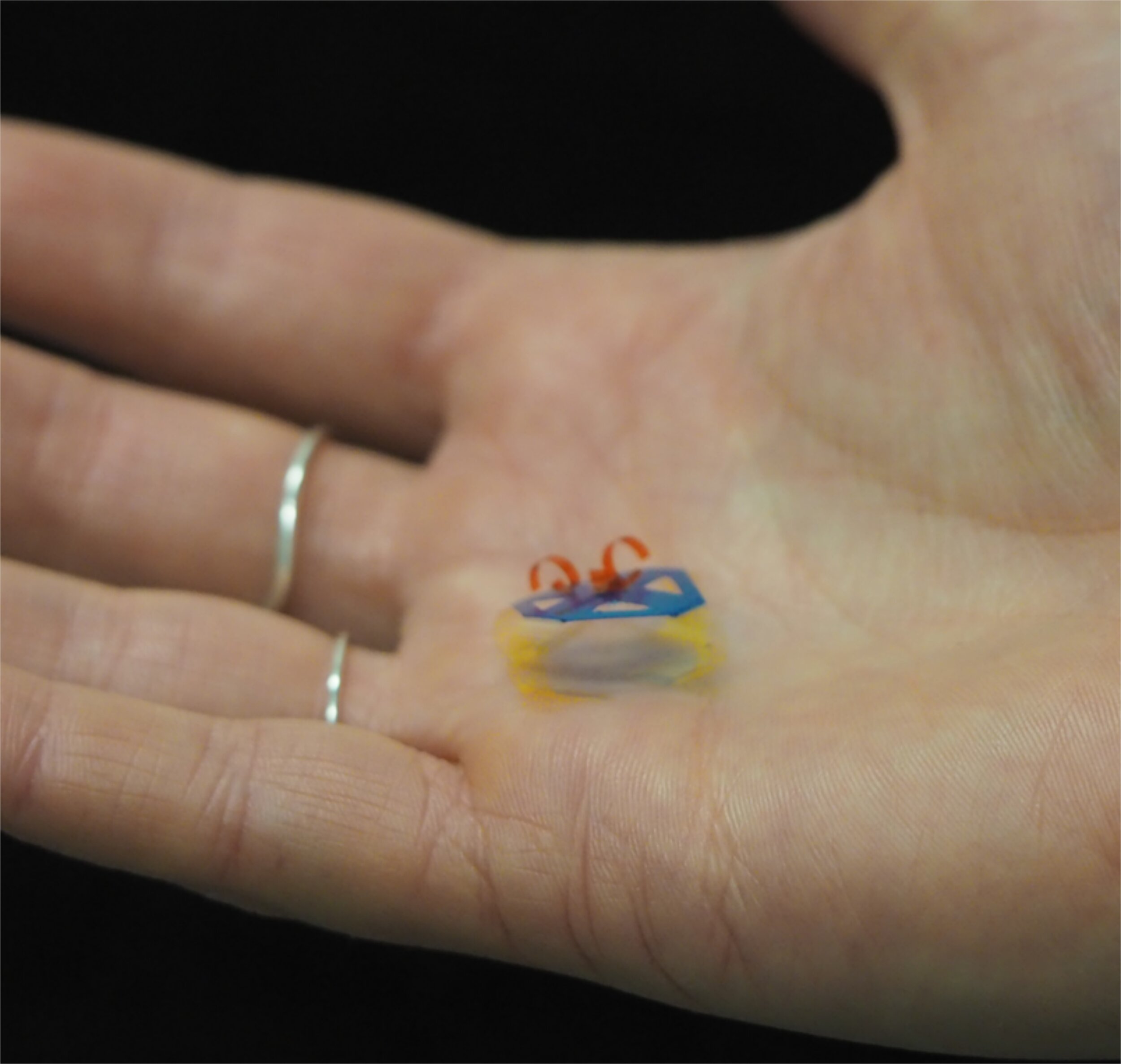Scientists from the Dutch Eindhoven University of Technology (TU/e) developed a tiny plastic robot that can collect and deliver small packages without the use of computer chips or batteries.
The tiny robot fits comfortably in the palm of your hand - Image Credit: TU Eindhoven
Scientists from the Dutch Eindhoven University of Technology (TU/e) developed a tiny plastic robot that can collect and deliver small packages without the use of computer chips or batteries. The minute robot has a diameter of 2 centimeters, no larger than the approximate width of an adult human finger, and can be controlled with the use of blue light.
All of this is not just a cool experiment for the fun of it, as the researchers expect to be able to use the robot for a variety of applications. It might, for example, be applied to carry out uncomplicated repairs in chip machines or be used to deliver medicine within the human body.
The technology behind the mini-robot is a continuation of previous Eindhoven / Kent State University research from 2017, where scientists developed a new type of polymer that can undulate and therefore propel itself forward under the influence of light. Back then, the material could only 'wiggle itself foward' in a more basic manner. The current plastic mini-robot consisting of the new type of polymer is able to move its arms and legs using light more elegantly as the material has been further developed. With its arms, the robot can carry tiny packages on its back after collecting them and consequently delivering them precisely to the correct spot.
So how does it work? The light-sensitive polymer is able to move when one side contracts and the other side expands. Blue light generates necessary expansion. Marina Pilz da Cunha, Doctoral Candidate from the Department of Chemical Engineering and Chemistry, explains: "The robot's legs stretch when light shines on them and bend as soon as the light goes out. That's how it takes steps." The robot can be steered in any direction by simply changing the direction of the light. Additionally, the arms and legs can be controlled independently of one another as well, thanks to their different colors reacting to different wavelengths of light.
As previously mentioned, one of the potential use cases envisioned by the researchers is as a medicine delivery agent. They confess that the road to actual practical use is probably a lengthy one. On the subject of possible use cases, Jaap den Toonder, Chair of the Microsystems research Section at TU/e mentioned that this application could potentially be used within the human body to deliver medication to the intestines or bloodstream. As another example, he pointed out that their small size and maneuverability could be useful in carrying out repairs in chip machines.
If these hypothetical use cases are to become reality, the miniature robots need to be reduced in size even further in addition to becoming more agile and controllable. Although light can be used to control the tiny robots for chip machine repairs, a different approach has to be taken for application in the human body. Pilz da Cunha suggested that the use of heat might offer a solution.
Overall the Eindhoven scientists have made incredible progress with their light-sensitive polymer materials. The feasibility of future real-world applications remains guesswork, but observing the dedication of the scientists involved engenders optimism!
If you got enticed by this little robot and are interested in learning more about the subject, be sure to check out the Advanced Science / Nature published papers listed below.
Sources and further reading: A Soft Transporter Robot Fueled by Light / Making waves in a photoactive polymer film
If you enjoy our selection of content please consider following Universal-Sci on social media:

















